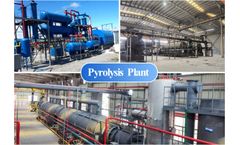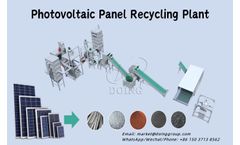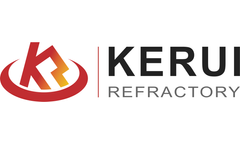Refine by
Hazardous Materials Articles & Analysis
18 articles found
Certain polymers are considered hazardous if contaminated with industrial residues. Facilities must maintain strict documentation of feedstock sourcing, storage, and traceability to comply with waste tracking systems. This traceability is crucial for verifying that banned materials such as medical plastics or halogenated compounds are excluded from the process. ...
This article outlines the types of raw materials suitable for pyrolysis and describes the general process flow of a waste pyrolysis machine. 1. ...
These materials have high recycling value and can be sold directly or reused in the manufacturing process, which not only reduces production costs but also promotes the circular economy. ...
This process involves subjecting plastic materials to intense heat in the absence of oxygen, leading to their decomposition into useful byproducts such as pyrolysis oil, syngas, and char. ...
This property refers to a material's ability to transfer heat. Low thermal conductivity bricks are desirable as they minimize heat loss and ensure efficient heat distribution within the incinerator. This promotes consistent and uniform temperatures throughout the combustion process.Chemical ResistanceGiven that incinerators handle diverse waste materials, ...
Environmental Impact: Lead acid batteries contain lead and sulfuric acid, which are hazardous materials. Improper disposal or recycling can pose environmental risks. ...
Even before it gets to the furnace, oil can be hazardous if its storage tanks are compromised. Leaks from oil tanks aren’t covered by most home insurance policies and can cost homeowners tens of thousands of dollars to clean up. ...
This collaboration gathered many plant and machinery designers together and a lot of expertise as well, so the results do speak for themselves. Now we have two highly efficient plants, which operate as pioneers in making renewable fuel in the US, RePower South CEO Mr. Brian Gilhuly ...
Nowadays and more than ever before due to the Coronavirus pandemic, millions of tons of waste are generated at hospitals, laboratories, health centers, clinics and other medical centers. Sensitive and hazardous materials that require specific treatment Medical waste is very sensitive material when it comes to its elimination due to its ...
ByTECAM
Safety precautions should be taken to prevent batteries from catching fire as well as to ensure safe disposal of batteries and the hazardous materials they contain. Leveraging Renewable Solar & Wind Energy Sources for Backup Power Businesses that have invested in solar power to complement their grid power consumption can rely on this green, eco-friendly ...
Furthermore, it recommends that all sharps contaminated with biohazardous materials should be disposed of carefully, in specialist containers ahead of incineration. ...
Waste incineration is a treatment process that involves the combustion of organic substances contained in waste materials by means of high temperatures. Waste Incineration technology can be installed in several sectors to treat hazardous waste, refining residues, chemical waste, pharmaceutical waste, hospital & medical waste, waste water plant sludge, NORM ...
ByTECAM
The early stages of energy-storage system design: Five principles include the need to: minimise the consumption of non-renewable materials; minimise the use of critical materials; make storage systems safe by using non-toxic and non-hazardous materials where possible; minimise emissions during production; and design for ...
This is a significant advantage; because, disposal of adsorption media can be a serious problem; it can be classified as a hazardous material. In applications where greater siloxane removal is needed, a TCR combined with the proper dessicant/adsorber can provide siloxane removal of approximately ...
It is also something that is linked into addressing concerns around the subjects of strategic materials, critical materials and the development of cradle-to-cradle circular economy models. ...
Large volumes of hazardous cargo move across US roadways daily. Field counts are conducted on sections of roadway that provide aggregated volumes. ...
The Environmental Protection Agency (EPA) is revising its hazardous waste management regulations under the Resource Conservation and Recovery Act (RCRA) to further promote the environmentally sound recycling of oil-bearing hazardous secondary materials generated by the petroleum refining industry. Specifically, EPA is amending an existing ...
Pyrolysis transforms hazardous organic materials into gaseous components, small quantities of liquid, and a solid residue (coke) containing fixed carbon and ash. Pyrolysis of organic materials produces combustible gases, including carbon monoxide, hydrogen and methane, and other hydrocarbons. ...
















